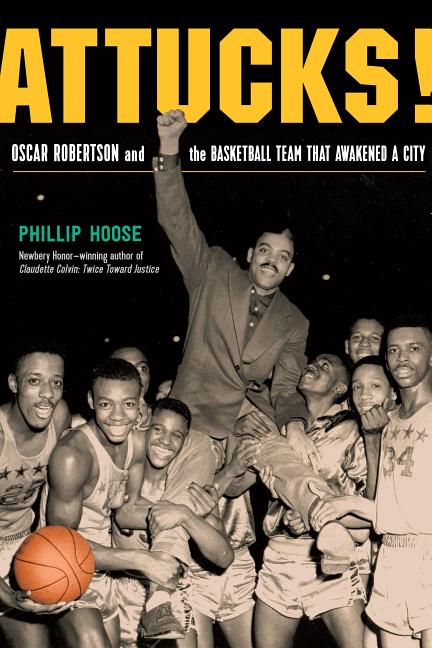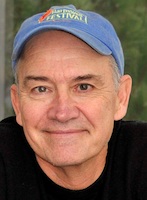Meet-the-Author Recording with Phillip Hoose
Attucks!: Oscar Robertson and the Basketball Team That Awakened a City |
Phillip Hoose introduces and shares some of the backstory for creating Attucks!: Oscar Robertson and the Basketball Team That Awakened a City.
Translate this transcript in the header View this transcript Dark mode on/off
Phillip Hoose: Hi, this is Phillip Hoose the author of Attucks!: Oscar Robertson and the Basketball Team That Awakened the City. And the city of Indianapolis and the time is the 1950s and I wrote the book because there was a school in Indianapolis where I grew up, that was for black students and black teachers only. If you grew up in those times in those years in Indianapolis, you had to go to Indianapolis Crispus Attucks High School. And the school was built by the Ku Klux Klan who influenced the politics of the state of Indiana during the 1920s especially it was built just to house black students because whites didn't want their kids going to school with blacks. It was just to stop racial integration. Blacks came pouring up from the south and they all had to go to school in that school, Crispus Attucks High School in Indianapolis.
One thing about Indiana in those years and even now, is it's the basketball capital of the world, 13 of the 14 biggest high school gymnasiums in the United States are in Indiana and Indiana spent fortunes on making its high school basketball tournament for boys that was world class. It was by far the best. But they would not let Crispus Attucks High School play in their great tournament. Crispus Attucks High School officials petitioned them, pleaded with them for 15 years in a row and they always said, no, you can't come.
Finally during World War II, they relented, let blacks in the tournament, but the kids at Crispus Attucks High School really didn't know how to play basketball. But that all changed when a coach named Ray Crow took a job at Crispus Attucks High School and taught them how to play and to play beautifully. And then all of a sudden they were winning game after game after game and they played with such style and verve that people had never seen basketball players play like this. They played up in the air. They dunked the ball. They ran a fast break.
All of a sudden, thousands and thousands of people throughout the state were flocking to see Crispus Attucks play and what really made it even greater was another family moved up from the south, from Tennessee, the Robertson family who included Oscar Robertson, who many think is the greatest basketball player who ever lived, and he was dominant as a kid and when Oscar joined the varsity, they were all but unbeatable. They won again and again and again.
Well not everybody liked that. Whites, many of them were very threatened and they believed that black athletes were better than white athletes and they became worried that there would be a dynasty, that Attucks would win all the games. What have we done? They smacked their heads and told each other, we can put every black athlete in a major American city into one school. There's going to be a dynasty. They'll win all the time. We've got to break them up. And so that's really how schools became integrated in Indianapolis back in the fifties was for fear that Crispus Attucks High School would win year after year, the Indiana High School Basketball Tournament.
I'm myself cared a lot about the story because it was in the next town over Indianapolis. I grew up in Speedway. I had an interview with the great Oscar Robertson when I first started becoming a writer I was so curious about it that he agreed to talk with me and he was the one who told me that the Ku Klux Klan, that they're the ones who started Crispus Attucks High School and when Oscar told me that I did a lot of research and interviewing and found out that it was true and the real shocker was that my grandfather was a Klansman and my family was deeply racially prejudiced, which shook me into the roots. I had to deal with that.
I actually took a job teaching at Crispus Attucks High School in its final year as a racially segregated school. So, I wrote this book mainly to work out some of this personal family material and also because I so admired Oscar and I so loved those Crispus Attucks High School basketball team. It's a book about basketball, but it's really a book about civil rights and social justice, happens to have basketball at its core and I'm very lucky that so many people agreed to interview me and that I was able to build on what I consider to be a great story, out of this.
This Meet-the-Author Recording with Phillip Hoose was exclusively created in January 2019 by TeachingBooks with thanks to Macmillan.



